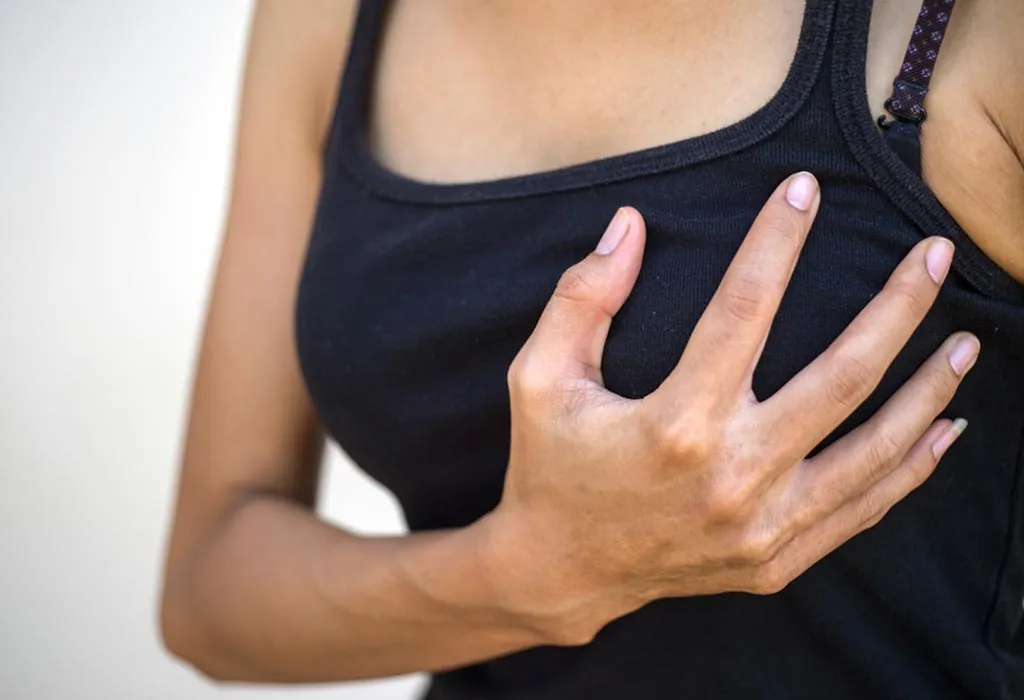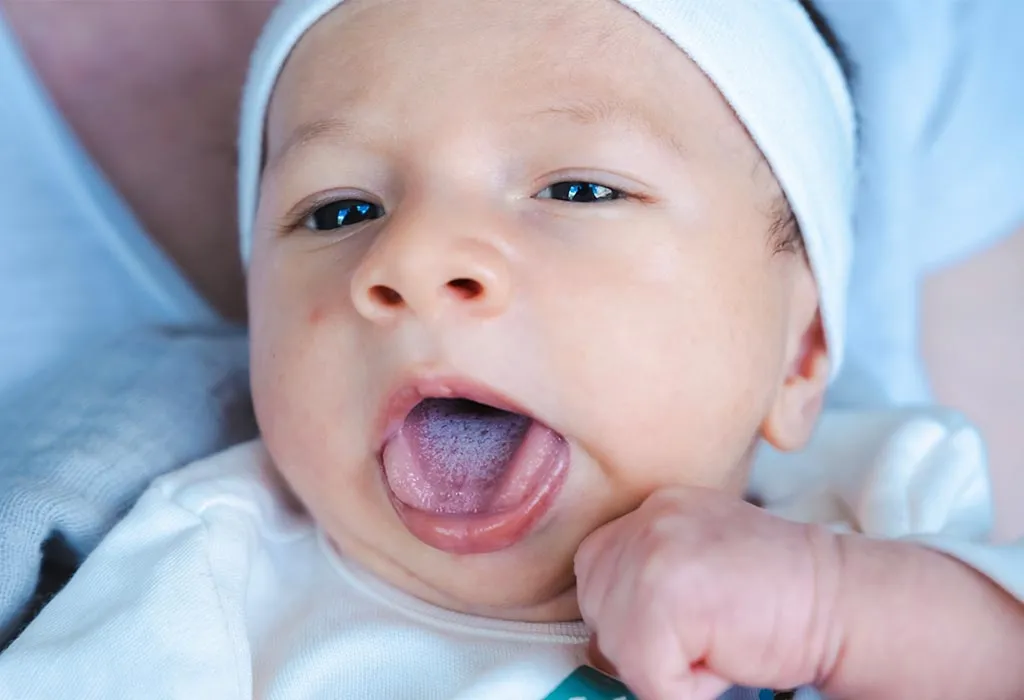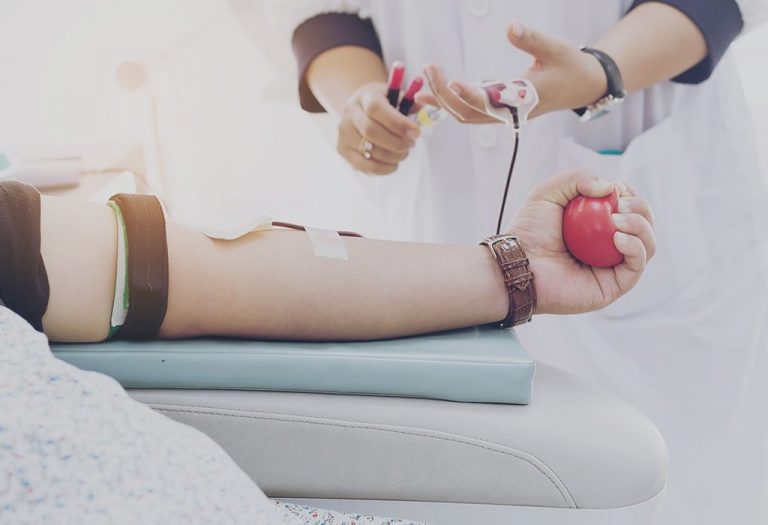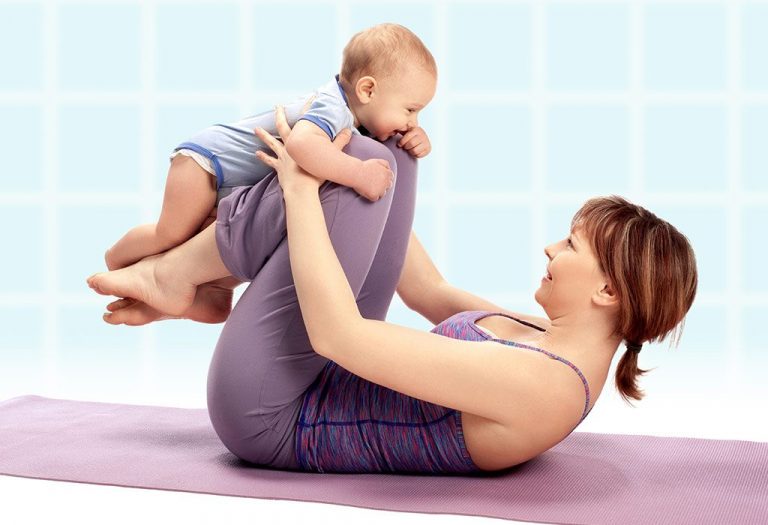Breastfeeding Pain – Causes and Its Solution

Mothers learn to breastfeed as they progress through their journey of motherhood, discovering what works best for both themselves and their babies. Breastfeeding is enjoyable when it’s coupled with love, patience, and the right methodology, creating a special bond between mother and child. However, the process isn’t always easy. Many mothers face challenges, including breast pain while nursing, which can make the experience difficult. Soreness, engorgement, or cracked nipples are common issues that require proper care and attention (1). Babies also experience discomfort as they learn how to establish a good latch, which can lead to frustration for both mother and child. Seeking guidance can help ease these struggles.
Is Pain While Breastfeeding Normal?
Research revealed that more than three-quarters of new mothers encountered breastfeeding pain in the initial two weeks after delivery (2). However, just over half sought assistance for their nursing challenges (3).
Though many expect breastfeeding to feel effortless and joyful right away, some discomfort is common as both mother and baby learn this new skill. The good news? Most breastfeeding-related pain can be resolved—or significantly reduced—with the right support and adjustments.
Common Reasons for Breast Pain During Breastfeeding and Their Remedies
There are various reasons for pain in your breasts during the nursing phase. Let us look at some of the common causes of breast pain during breastfeeding and how to handle it (4).
1. Breast Engorgement
Breast fullness is a normal condition and your body’s way to ensure that your baby has a sufficient quantity of milk. However, this fullness due to milk and increased blood flow makes the tissues swell. Your breasts become hard, heavy, tight, lumpy and painful. This is known as breast engorgement. Babies find it difficult to latch on to engorged breasts as the nipples can become flat.
What You Can Do
- Expressing a little milk by hand; using hand expression softens the areola and helps the baby to latch-on easily.
- Feeding the baby at appropriate intervals, maybe around 8 to 12 times in 24 hours can relieve pain.
- Applying cold compresses to the breasts between feedings helps the swelling decrease and makes you feel good. Equivalents to cold compresses include bags of frozen peas or cold cabbage leaves.
- Applying warm compresses, taking warm showers, or leaning your breasts over warm water before you feed the baby can be very helpful.
- Massaging your breasts helps in milk flow.
- Wearing a correctly fitting breastfeeding bra and avoiding underwire bras minimises discomfort.
Although paracetamol or ibuprofen are safe and can help in easing pains, please consult your doctor before taking them.
2. Blocked Breast Milk Ducts
There are various milk ducts, which are narrow tubes that transport milk from the milk glands to your nipple. If one of these ducts is not completely drained, it might create a blocked duct. These blocked ducts can cause lumps in your breast. The skin can turn red in that area. Sometimes, the openings at the nipple can be blocked and appear like a white dot.
What You Can Do
- Frequent feeding from the breast that has a blocked duct.
- Warm compresses, warm showers, or using warm flannels help in the free flow of milk from the duct.
- Massaging the breastfeeding pain lumps towards the nipple when the baby is feeding can help in draining the duct.
- Placing the chin of your baby in a position pointing towards the lump can help it feed on that part of your breast.
3. Mastitis
When a blocked duct is not dealt appropriately and on time, it leads to inflammation of the breasts and makes it painful. You might feel unwell with a high temperature and can have flu-related symptoms.
What You Can Do
- Continue breastfeeding and make the baby feed on the affected breast. Continuous feeding on the infected breast will be painful and challenging, but it can help in clearing off the infection.
- If the baby can’t feed, express your milk.
- Check the baby’s position during feeding. Proper positioning and latching are important and helpful.
- Ensure that you get enough rest.
4. Sore or Cracked Nipples
Some mothers can experience severe pain while breastfeeding due to sore or cracked nipples. It can occur when the baby doesn’t latch well, or the baby is not positioned correctly during feeding.
What You Can Do
Sometimes, sore nipples can disappear after a few days. Following are some remedies that can help you when you have sore nipples:
- Ensure that the baby is positioned properly during a feed. Also, ensure that the baby latches correctly. Experiment with different positions so that the baby learns to latch well.
- Lubricate the nipple by expressing milk.
- After a feed, ensure that the nipples are dry.
- If your nipple is bleeding, you can use nipple shields, if required.
However, if sore or cracked nipples do not heal, consult your doctor to get the required solutions.
5. Breast Abscess
In some cases, which are usually rare, if the infection caused by mastitis is not treated, it can lead to a condition known as the breast abscess. In this condition, you can find a boil with pus formation. It is painful and can cause discomfort. One precautionary measure to prevent an abscess is treating mastitis without delay.
What You Can Do
In such conditions, you must consult a doctor. Sometimes, the boil might break off by itself, and the pus drains out. However, in some severe conditions, surgical drainage is required. You can continue breastfeeding after the abscess is drained out and have the green signal from your doctor.
6. Thrush
Unbearable nipple pain during breastfeeding can be caused by a thrush or candida infection in the breast. Babies can also develop this infection in their mouth. This infection might occur when you have had a cracked nipple, and the candida fungus enters your nipple or breast. One of the key symptoms is excruciating pain that lasts for a longer period after a feed. You must check for thrush infections in the baby, as well. The following are some conditions that indicate thrush in babies:
- White spots or patches on the tongue, lips, and gums
- Nappy rash not clearing up easily
What You Can Do
The following are some pointers that are helpful while getting treated for thrush:
- Maintaining cleanliness is very important. Wash your hands appropriately, especially after nappy changes and use separate towels to prevent the infection from spreading.
- Wash breastfeeding bras with hot water or at a high temperature.
- If you are expressing milk, do not freeze it.
- Your doctor may prescribe a cream to apply around your nipples after feeding the baby.
7. Let-down Reflex
You might experience tingling sensations, pin-pricking sensations, or pain in the breast while breastfeeding when the milk is let down. Let down means a release of milk. Let down reflex occurs when the baby sucks your breast, cries, or you think about your baby. These actions activate the hormone, oxytocin, which stimulates your breasts. This stimulation causes leaking or release of milk.
What You Can Do
If you experience severe pain, it is advisable to consult your doctor and check whether it’s an infection. However, if it’s not an infection, it can be due to excess milk. So, it is advisable to feed the baby for a longer duration on one breast before feeding with the other breast.
8. Vasospasm
Sudden nipple blanching (turning white) with throbbing pain, often after feeds, may indicate vasospasm, caused by poor blood flow, often due to cold or latch issues.
What You Can Do
- Keep breasts warm with wool pads or warm compresses.
- Avoid caffeine and smoking (can worsen blood flow).
- Correct latch to reduce nipple trauma.
- Consult a doctor—Raynaud’s phenomenon or other conditions may be involved.
9. Oversupply or Fast Milk Flow
Excessive milk can cause choking, gagging, or fussiness in babies, along with breast tenderness.
What You Can Do
- Nurse lying back to slow milk flow.
- Let the baby finish one breast before offering the other.
- Hand-express briefly before feeds to ease forceful letdown.
10. Breastfeeding During Pregnancy
If you become pregnant while nursing, hormonal changes can cause nipple tenderness and increased breast sensitivity.
What You Can Do
- Try different positions to find what’s most comfortable
- Apply cool compresses after feeding
- Shorten nursing sessions if needed
- Ensure a proper latch to minimise discomfort
- Stay hydrated and get extra rest
- Consider weaning if pain becomes unmanageable (consult your doctor)
These were the remedies for breast pain during breastfeeding. While some tenderness is normal initially, persistent breast pain after breastfeeding may indicate issues like mastitis, thrush, or vasospasm that require medical attention (5).
FAQs
1. Can breastfeeding pain be related to maternal dental problems?
Surprisingly, yes. Dental infections or untreated cavities can sometimes cause referred pain that radiates to the breast during nursing. The nerve pathways in the head and chest area are interconnected, and inflammation in teeth or gums may manifest as unusual breast tenderness.
2. Does breastfeeding pain ever indicate a spinal alignment issue?
In rare cases, yes. Poor posture during nursing or pre-existing spinal misalignments can lead to nerve compression that manifests as breast pain. Some women report relief after chiropractic adjustments, especially if they experience pain in specific positions or have a history of back problems.
3. Can breastfeeding pain be caused by a tongue-tie in the baby?
Yes, an untreated tongue-tie (ankyloglossia) is a common but often overlooked cause of persistent breastfeeding pain. When an infant’s tongue mobility is restricted due to a tight lingual frenulum, they may compensate by gumming or chomping on the nipple instead of suckling properly. This inefficient latch can lead to significant nipple trauma, including cracking, bleeding, and ongoing discomfort.
This was all about breastfeeding and pain. Although breastfeeding is a natural process, it is always advisable to consult your doctor to understand the various causes of pain while breastfeeding and their suitable remedies. While your body knows how to cope with the various problems, ensure that you are cautious and take appropriate care so that you enjoy building that unique bond with your baby during breastfeeding.
References/Resources:
1. CDC – What to Expect While Breastfeeding
2. National Library of Medicine – Breastfeeding Difficulties and Risk for Early Breastfeeding Cessation
3. CDC – Chapter 2. Neonatal Survey
4. NHS – Breast pain and breastfeeding
5. ABM Protocol – ABM Clinical Protocol #26: Persistent Pain with Breastfeeding
Also Read:
Low Breast Milk Supply
Choking while Breastfeeding
Breastfeeding Latching Problems
Breastfeeding Problems & Their Solutions
Was This Article Helpful?
Parenting is a huge responsibility, for you as a caregiver, but also for us as a parenting content platform. We understand that and take our responsibility of creating credible content seriously. FirstCry Parenting articles are written and published only after extensive research using factually sound references to deliver quality content that is accurate, validated by experts, and completely reliable. To understand how we go about creating content that is credible, read our editorial policy here.



























